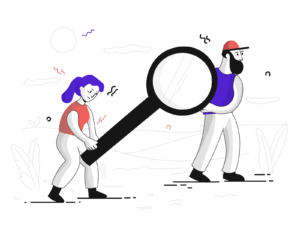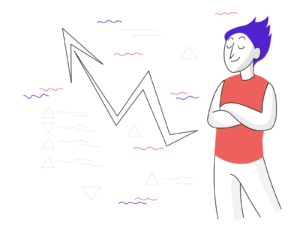With the importance of search engines increasing as consumers move online, optimizing your eCommerce site for search engines has become crucial to success online. It’s no longer enough to have good content on the site; you also need to ensure that search engines can actually crawl and index that content effectively.
Nowadays as eCommerce constantly growing, so do the challenges of ensuring a site’s technical SEO success. To avoid falling behind in this increasingly competitive space, here are 8 technical SEO for eCommerce site in 2023 and beyond
Tip #1: Audit for Google Analytics and search console
- To check if your account and property setup are completed and connected properly.
- To check if the code places on all of the pages of the website.
- Make sure it is fetching data properly.
- Use a browser Googlebot to verify if your site is indexing well
- Check your robots.txt file to ensure that it contains all necessary rules or remove this file entirely if not necessary
- Review other files like sitemaps, robots.txt, or htaccess files to see what they contain and whether they need updating
- Review how long it takes for search engine crawlers to visit each URL on your website because some sites take longer than others
Tip #2: Optimize Your Title Tags and Meta Descriptions
The title tags and Meta descriptions are the most important on-page SEO factors you can optimize in terms of technical SEO for eCommerce site.
- These two pieces of content appear in the search engine results page, or SERP, and also on social media platforms such as Facebook and Twitter.
- Make sure that they are optimized with your target keyword phrase and provide a compelling call to action.
- Meta descriptions should be 150-160 characters max with keywords included once at the beginning of the description.
- Title tags have always been important because they appear as a clickable link at the top of search engine results pages.
- Meta descriptions appear directly below title tags and are also clickable links, sending users to your website when clicked.
- With Meta descriptions now appearing on Facebook and Twitter, it is even more crucial that they contain compelling keywords.
- Optimize your titles and Meta descriptions so that you can be found by potential customers on all platforms.

Visibility
Being more visible to the target audience is the a key factor that accelerate demand.
Tip #3: Optimize Your Product Pages for Rankings and Conversions
The most important aspect of any technical SEO for eCommerce site is optimizing your product pages.
- This includes creating appropriate titles, descriptions, headings, H1 tags, and more to help with rankings and conversions.
- Beyond just ranking well in Google, optimizing your product pages can lead to greater profits from higher conversion rates as people are able to find what they’re looking for more quickly on your site.
Here are the things you must do to optimize your pages to maximize conversions:
- Use a call-to-action button that appears prominently on every page (such as add to cart)
- Add testimonials or reviews from customers who have bought the item before
- Make sure that shipping and returns policies are clearly outlined
- Linking directly back to a store’s homepage after purchasing an item is another way to encourage repeat purchases
- And don’t forget to include links to related items!
Tip #4: Implement Schema Markup on Your Site
Schema markup is content that uses HTML tags to tell search engines what your site’s data is about.
- In other words, it’s a way to label the information on your page so that search engines can better understand it.
- This also helps them rank you higher for relevant searches. Schema markup can be used with a variety of types of content on your website, including blog posts and products.
- It should be used on pages with Meta descriptions or titles containing keywords, as well as specific product pages.
- That is a very important thing while you are doing technical SEO for eCommerce site. First, identify the type of information you want to mark up. The most common types are reviews, events, recipes, people, businesses (specifically brick-and-mortar), books, movies/videos/TV shows, music albums or songs, and news articles.
Tip #5: Improve Your Site’s Loading Speed and performance
One way to improve your site’s loading speed and performance is by using a Content Delivery Network (CDN) service.
- The CDN caches your content on servers around the world, which can decrease loading times by as much as 50%.
- A quick Google search will show you plenty of options; Cloud flare, MaxCDN, and KeyCDN are all popular choices. You may want to experiment with different providers and see what works best for you.
- It’s also a good idea to use Page Speed Insights tool. When you have a site online, enter its URL into Google’s tool and it will provide an overall rating, as well as suggestions on how to improve your site.
Tip #6: Make Sure Your Site Is Mobile-Friendly
If your site is not mobile-friendly, chances are you’re missing out on a lot of potential customers. According to Google’s recent update, mobile friendliness is now a ranking factor and ranks as one of the most important criteria when determining how well your website will rank on mobile search results.
A site with a responsive design will look just as good on a desktop browser as it does on smaller screens such as tablets or smart phones.
Catapult Brand Demand with Strategic Content Marketing
Having a content-first approach helps you to create the authority in the sector and generate demand for your brand.
Contact Our Content Manager NowTip #7 Audits for crawling and indexing
Check the robots.txt file to ensure that Google’s crawlers and spiders have access to all of the important pages on your site and that they are not blocked by a robots.txt file.
- This is especially important if you are using a third-party shopping cart, as these carts often block Google from crawling your product pages.
- txt files can also be configured to disallow bots or spidering at various levels (domain, directory, and page).
- Ensure that your robots.txt does not prevent any important pages from being indexed, as this could affect visibility and rankings.
If you need help with this process, consult an experienced technical SEO specialist.
Tip #8: Images and videos of product optimization
Images and videos are one of the best ways to optimize an online store’s search engine rankings.
- Make sure your product images have a large enough file size so that they don’t get pixilated on high-resolution screens, are unedited with no filters, and show the full range of color and texture.
- Also make sure to include relevant keywords in your alt-text descriptions, titles, and captions.
- Also, make sure your videos are optimized so that you can rank high on both YouTube and Google searches.
- Create a YouTube channel if necessary to upload them directly from YouTube instead of embedding them from external websites.
- Make sure that when a user searches for relevant keywords, your video appears in their search results.
Conclusion
You should now be familiar with the basics of technical SEO for ecommerce site, but as you can see, it’s a process that must be taken care of on an ongoing basis. Make sure to use these 8 tips to develop a list of priorities and review them regularly.
Technical SEO is more than just fixing technical glitches and taking care of optimization techniques—it’s an evolving science. Stay informed so you can maintain the lead over your competition!
Reviewed By
-
algorithmchttps://blog.algorithmc.com/author/algorithmc/
-
algorithmchttps://blog.algorithmc.com/author/algorithmc/
-
algorithmchttps://blog.algorithmc.com/author/algorithmc/
-
algorithmchttps://blog.algorithmc.com/author/algorithmc/




